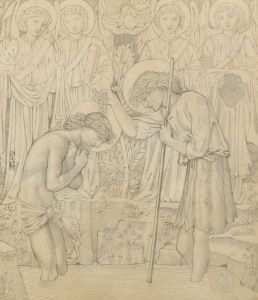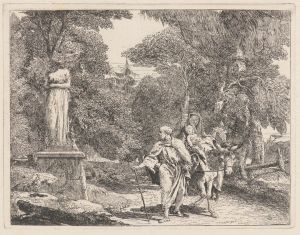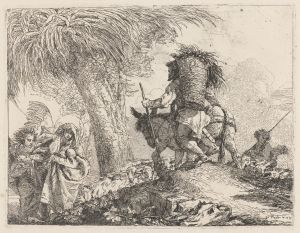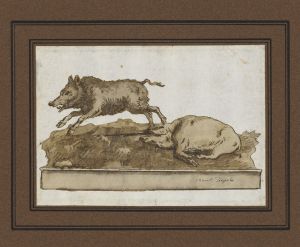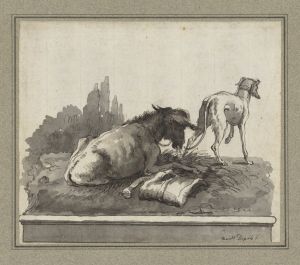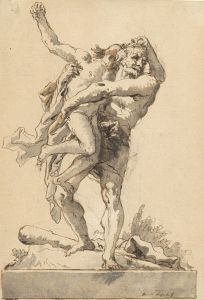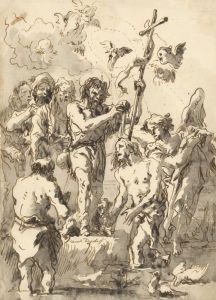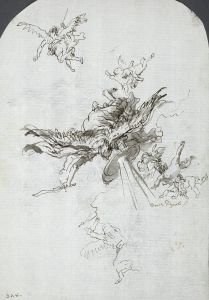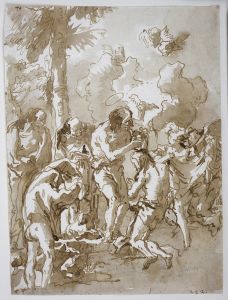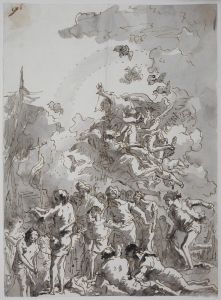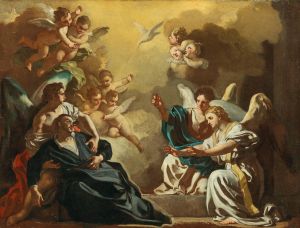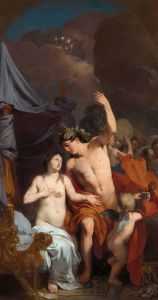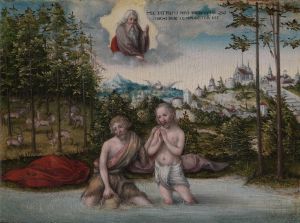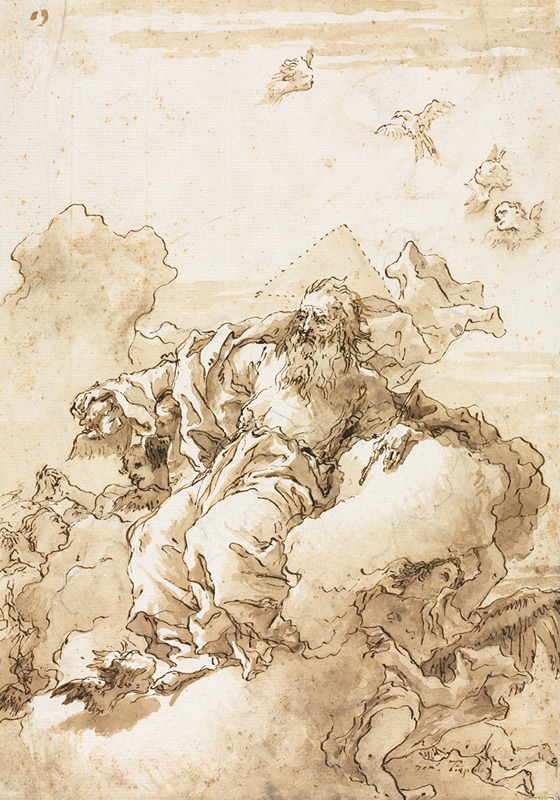
God the Father with Symbol of the Trinity
A hand-painted replica of Giovanni Domenico Tiepolo’s masterpiece God the Father with Symbol of the Trinity, meticulously crafted by professional artists to capture the true essence of the original. Each piece is created with museum-quality canvas and rare mineral pigments, carefully painted by experienced artists with delicate brushstrokes and rich, layered colors to perfectly recreate the texture of the original artwork. Unlike machine-printed reproductions, this hand-painted version brings the painting to life, infused with the artist’s emotions and skill in every stroke. Whether for personal collection or home decoration, it instantly elevates the artistic atmosphere of any space.
"God the Father with Symbol of the Trinity" is a painting by the Italian artist Giovanni Domenico Tiepolo, who was a prominent figure in the 18th-century Venetian art scene. Giovanni Domenico Tiepolo, often referred to simply as Domenico Tiepolo, was the son of the renowned painter Giovanni Battista Tiepolo. Domenico was born in Venice on August 30, 1727, and he became an accomplished artist in his own right, continuing the legacy of his father while developing his own distinctive style.
The painting "God the Father with Symbol of the Trinity" is an exquisite example of Domenico Tiepolo's religious works. It depicts God the Father, a central figure in Christian theology, accompanied by the symbol of the Holy Trinity. The Holy Trinity, a fundamental concept in Christianity, represents the unity of God the Father, God the Son (Jesus Christ), and God the Holy Spirit as three persons in one Godhead.
In this artwork, God the Father is typically portrayed as an elderly, majestic figure with a long beard, often depicted in a heavenly setting. The symbol of the Trinity is usually represented by a triangular halo or an arrangement of three interlocking circles, signifying the three persons of the Trinity. Domenico Tiepolo's depiction is noted for its clarity and the serene, divine presence of God the Father, which is a hallmark of his religious compositions.
Domenico Tiepolo's style is characterized by his use of light and color, which he inherited from his father but also adapted to his own sensibilities. His works often exhibit a delicate balance between the dramatic and the serene, capturing the spiritual essence of the subjects he portrayed. In "God the Father with Symbol of the Trinity," this balance is evident in the harmonious composition and the ethereal quality of the divine figure.
The painting reflects the Baroque tradition of religious art, which aimed to inspire devotion and convey the grandeur of divine mysteries. Domenico Tiepolo's ability to convey complex theological concepts through visual art is a testament to his skill and deep understanding of religious themes. His works were highly sought after by churches and private collectors, and he contributed significantly to the decoration of numerous religious institutions.
While specific details about the commission and the exact date of creation for "God the Father with Symbol of the Trinity" are not readily available, it is known that Domenico Tiepolo was active in producing religious art throughout his career. His works can be found in various churches and museums, where they continue to be admired for their artistic and spiritual qualities.
In summary, "God the Father with Symbol of the Trinity" by Giovanni Domenico Tiepolo is a notable example of 18th-century Venetian religious art. It showcases the artist's mastery in depicting divine subjects with a sense of reverence and beauty, contributing to the rich tradition of Christian iconography.





